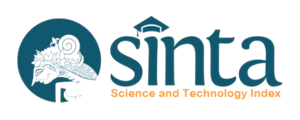IMPLEMENTING CONCEPT MAPPING TECHNIQUE TO IMPROVE STUDENTS DESCRIPTIVE WRITING ABILITY
(1) SMP Negeri 21 Samarinda
(2) Mulawarman University
(3) Mulawarman University
(*) Corresponding Author
Abstract
Keywords
Full Text:
PDFReferences
Avery, P.G., Baker, J., & Gross,S.H. (1997). Mapping learning at the secondary level. The Clearing House, 70(5), 279-285.
Brown, H. Douglas. 1994. Principles of Language Learning & Teaching. Third Edition. Prentice Hall.
Fahim, Mansoor & Rahimi, Amir Hossein. 2011. The Effect of Concept Mapping Strategy on the Writing Performance of EFL Learners. Journal of Academic and Applied Studies. Accessed on 10th September 2013.
Freeman, M. H. (2002). Cognitive mapping in literacy analysis. Los Angeles Valley College. EBSCO Publishing.
Miller, Lisa. 2008. Using Concept Maps to Facilitate Writing Assignments. Third International Conference on Concept Mapping. Accessed on September 15th, 2013.
Novak, J.D. & A.J. Canas. 2006. The Theory Underlying Concept Maps and How to Construct Them, Technical Report IHMC CmapTools. Florida.
Razmjoo, Seyed Ayatollah. 2012. On the Effect of Cooperative Writing On Students Writing Ability, WTC, Self-efficacy, and Apprehension. World Journal of English Language Vol. 2, No. 2; June 2012.
Rubiyah. 2014. Implementing Concept Mapping Technique to Improve the StudentsAbility of Writing Descriptive Composition of the Seventh Graders at SMP Negeri 21 Samarinda. Unpublished Thesis. Mulawarman University: Samarinda
White, Hal. 2011. How to Construct A Concept Map.Department of Chemistry and Biochemistry, University of Delaware. Accessed on September 20th, 2013 from www. Udel/chem/white/teaching/concept map.html
Wycoff, J. 1991. Menjadi Super Kreatif Melalui Metode Pemetaan Pikiran.
DOI: https://doi.org/10.24071/llt.v21i1.949
Refbacks
- There are currently no refbacks.
Copyright (c) 2018 Rubiyah Rubiyah Rubiyah, Maria Teodora Ping, Syamdianita Syamdianita Syamdianita
LLT Journal: A Journal on Language and Language Teaching Sinta 1 Certificate
.jpg)

This work is licensed under CC BY-SA.
Creative Commons Attribution-ShareAlike 4.0 International License


.png)


















